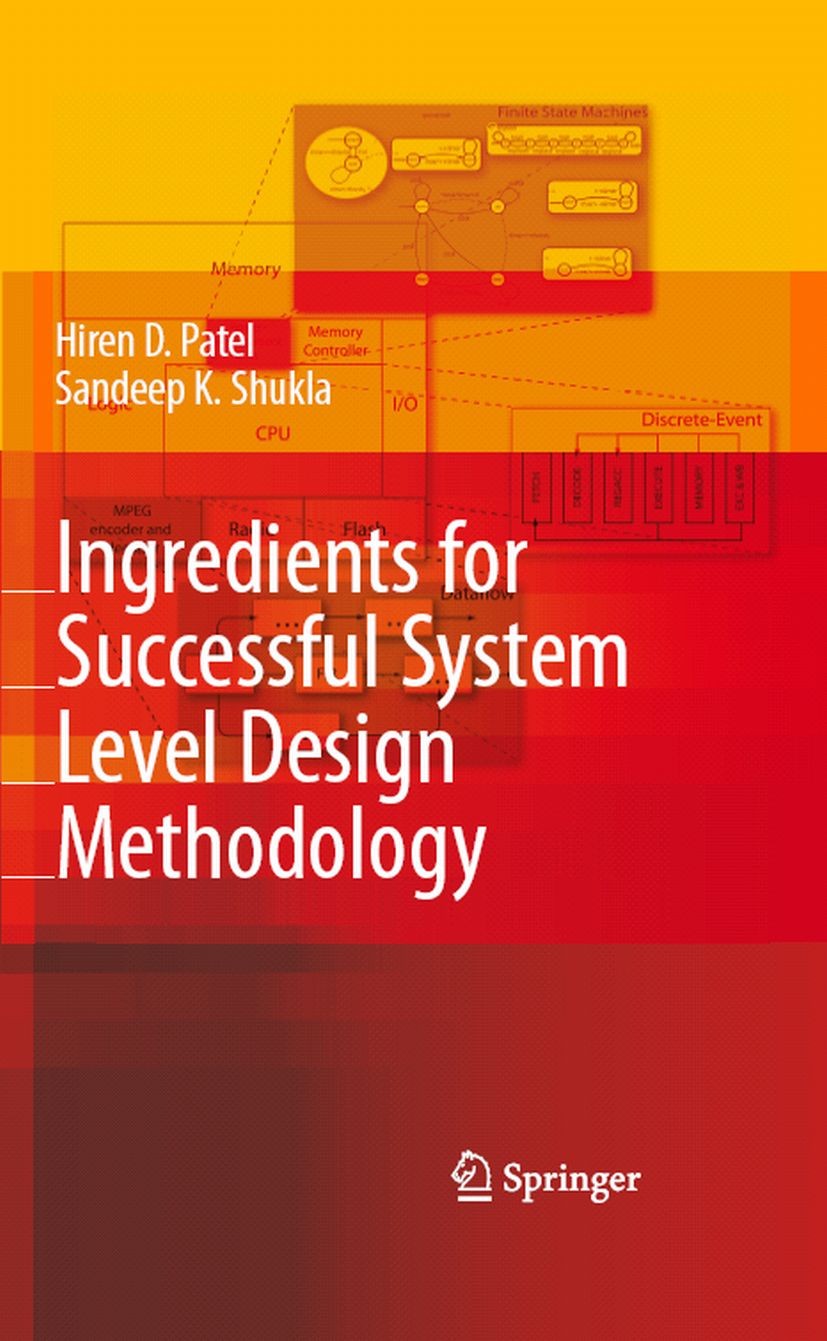| 书目名称 | Ingredients for Successful System Level Design Methodology | | 编辑 | Hiren D. Patel,Sandeep K. Shukla | | 视频video | http://file.papertrans.cn/467/466428/466428.mp4 | | 概述 | A first book to discuss the wish lists for an ESL language and environment in a comprehensive manner and provide solutions that enable the wish list.The solutions in this book are all implemented in p | | 图书封面 |  | | 描述 | ESL or “Electronic System Level” is a buzz word these days, in the electronic design automation (EDA) industry, in design houses, and in the academia. Even though numerous trade magazine articles have been written, quite a few books have been published that have attempted to de?ne ESL, it is still not clear what exactly it entails. However, what seems clear to every one is that the “Register Transfer Level” (RTL) languages are not adequate any more to be the design entry point for today’s and tomorrow’s complex electronic system design. There are multiple reasons for such thoughts. First, the c- tinued progression of the miniaturization of the silicon technology has led to the ability of putting almost a billion transistors on a single chip. Second, applications are becoming more and more complex, and integrated with c- munication, control, ubiquitous and pervasive computing, and hence the need for ever faster, ever more reliable, and more robust electronic systems is pu- ing designers towards a productivity demand that is not sustainable without a fundamental change in the design methodologies. Also, the hardware and software functionalities are getting interchangeable and ability | | 出版日期 | Book 2008 | | 关键词 | Electronic Design Automation (EDA); Electronic System Level (ESL); System; System Level Design (SLD); ar | | 版次 | 1 | | doi | https://doi.org/10.1007/978-1-4020-8472-0 | | isbn_softcover | 978-90-481-7890-2 | | isbn_ebook | 978-1-4020-8472-0 | | copyright | Springer Science+Business Media B.V. 2008 |
The information of publication is updating

|
|
 |Archiver|手机版|小黑屋|
派博传思国际
( 京公网安备110108008328)
GMT+8, 2025-11-19 09:11
|Archiver|手机版|小黑屋|
派博传思国际
( 京公网安备110108008328)
GMT+8, 2025-11-19 09:11


